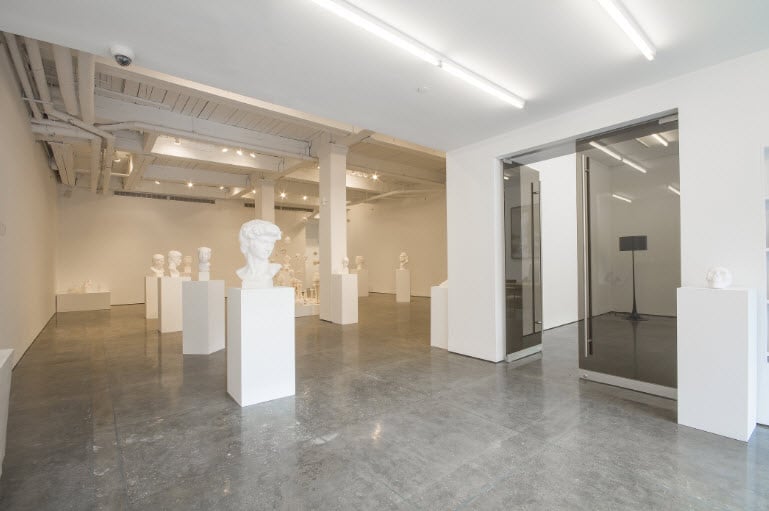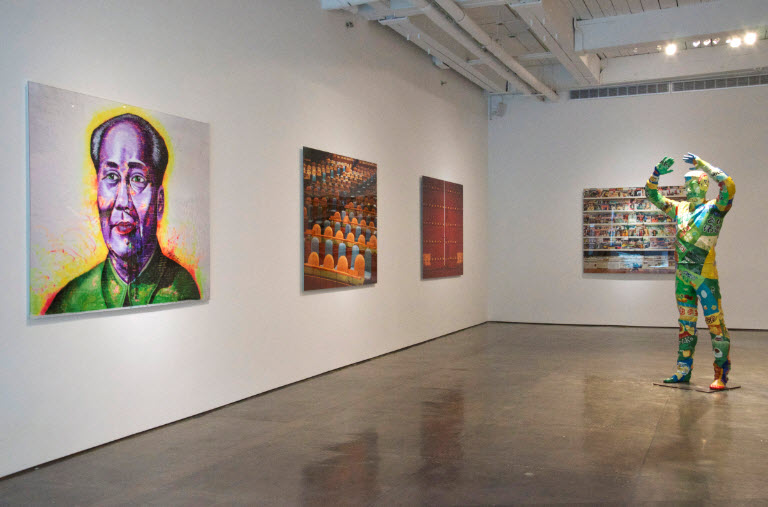Art & Exhibitions
Eli Klein on Why Chinese Contemporary Art is a Good Investment
The world of Chinese contemporary art can be very difficult to navigate without guidance.

The world of Chinese contemporary art can be very difficult to navigate without guidance.

Artnet News

Founded in 2007 in the heart of Chelsea, Klein Sun Gallery represents prestigious Chinese artists such as Liu Bolin, Zhang Dali, Li Hongbo, and Cui Xiuwen. Its primary goal is to nurture a connection between East and West by providing exposure to China’s premium talent.
At a very young age, Eli Klein has emerged as one of the preeminent dealers of Chinese contemporary art. As a child, he spent time in Hong Kong, which rooted within him a deep love and understanding of Chinese culture. Here, he discusses the aspects of the East and the artists that motivate his work, as well as the Chinese art market.
Tell us about your background and what led you here.
From an early age, I have been enthused by the arts, Asian art in particular. During my childhood, I was fortunate enough to spend a year living in Hong Kong with my family, and it was during this time that I became infatuated with Eastern culture.
Having returned to lower Manhattan to attend public school during the 1990s, I then went on to study history at the University of Wisconsin-Madison. Following this, I decided to follow in my parents’ footsteps and attended the Benjamin N. Cardozo School of Law at Yeshiva University. However, my passion for the arts prevailed, and I became determined to establish my own contemporary gallery.
I recognized that mainland [China]’s contemporary art scene could be huge—and greatly influenced by me, with my ability to straddle both East and West. Spending a lot of time in China, and specifically in Beijing, I was introduced to Shanna Sun: the “Sun” in Klein Sun Gallery. Together we held an identical vision to cultivate a unique selection of Chinese artists, presenting their diverse practices to a global audience, and subsequently Klein Sun Gallery was founded.

Installation view of Li Hongbo’s “Tools of Study” exhibition.
Photo: Courtesy of Klein Sun Gallery. ©Li Hongbo.
What type of art does your gallery focus on and what makes your gallery unique?
I’ve never been one to follow the mainstream. I prefer to create my own mainstream within the art world. Specializing in Chinese art in New York is unique in itself. Through museum exhibitions, gallery shows, the publication of catalogues, and academic essays, I strive to stimulate an intercultural dialogue, while promoting an academic approach to China’s most groundbreaking talents.
I love the gallery’s lower level artists’ studios, which we now use for residency programs, dedicated to some of the most promising young, mainland Chinese artists. Inviting several promising artists from China to New York grants them an opportunity to experience the hustle and bustle of the Western art world.
How does working with Chinese artists differ from working with Western artists?
I am passionate about working with Asian artists as, through art, they offer us a glimpse into the authenticity of Chinese culture and tradition. I don’t believe this exists as prominently in Western art.

Installation view of Liu Bolin’s “A Colorful World?” exhibition.
Photo: Courtesy of Klein Sun Gallery. ©Liu Bolin.
How do you select the artists you represent? When does your personal taste play a role in your selection?
The work of all my represented artists intrigues me. It wouldn’t make sense to promote an artist I didn’t believe in. I keep an eye on particular artists from China. It is what I do and what I look for on a daily basis. I can say that I am often right about the artists I have my eye on.
What advice can you give to a first-time collector interested in Chinese contemporary art?
A collector must be drawn to the art they collect, and the work should really mean something to them. They must make sure that they’re buying the art from a very reputable gallery and a dealer they trust. The world of Chinese contemporary art can be very difficult to navigate, and impossible to do so as a novice without guidance.
If you were not an art dealer, what would you be doing?
I trained in law, so perhaps I’d be working in that field. Both my parents are top lawyers, so I’d like to think that I would have followed in their footsteps.
How did you settle on your specialty? What is the most challenging part of running a gallery?
I didn’t settle on Chinese contemporary art, I chose it. Chinese art is the perfect investment. Not only are you taking home a stunning artwork, you are also investing in the culture.
The most challenging part of running a gallery is making sure we remain at the forefront of the contemporary art scene. There’s no room to slip. But I guess this is what makes the art world exciting—it is important to take risks, be diverse, and challenge yourself.
Where are most of your buyers from? What is your target demographic?
I’m not an ordinary art dealer, and my buyers are not the usual suspects. Many are new collectors spending new money. Only a third are American; the rest are from places far from New York, Paris, London, or Berlin. They’re unimpressed with Western ideals, and they buy art with their heads more than their hearts—they don’t buy art, they invest. Wealth is no longer concentrated in the hands of Europeans; most of my collectors are new to both collecting and wealth.
If you could own any artwork, what would it be and why?
I think I’d own a huge Mark Rothko painting, because all of mine are too small.